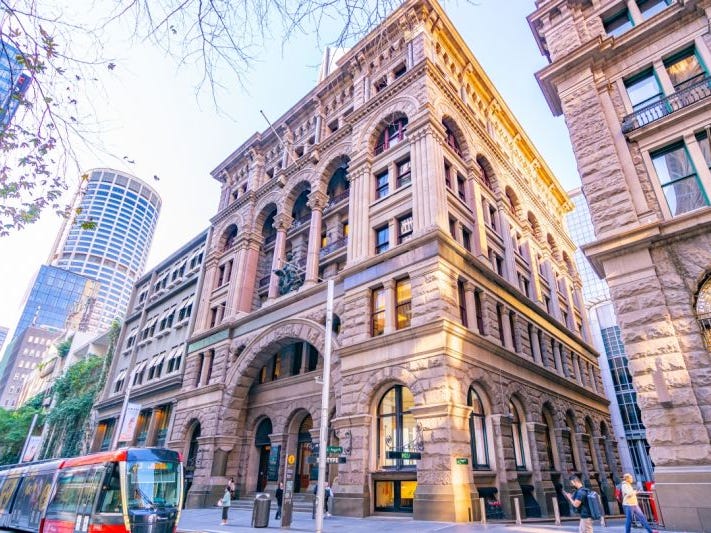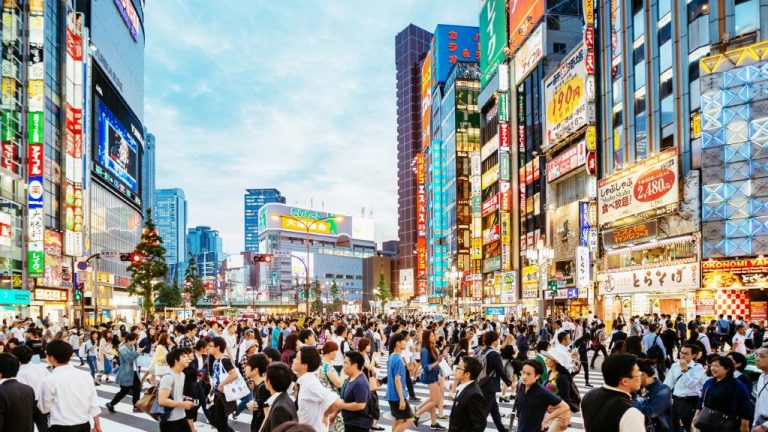Step back in time: The lure of heritage office space

Three office suites in one of Sydney CBD’s most well-known heritage buildings are set to go under the hammer.
The second floor assets of 350 George Street include one tenanted 8sqm suite, and two vacant suites – one 35 sqm and the other 48 sqm.
“350 George Street was actually the last building in Sydney to be strata-ed down,” JLL NSW capital markets associate director Willem Watson said.
“So it was the final one, and you would say the most prestigious in Sydney as well, purely because of the amazing location it has to the light rail of course, which is just out the front.
“Its presence on George Street, everyone walks past it. Everyone knows where it is, so it’s a fantastic offering and having three suites makes it one unique offering because you’ve got people who would like to buy one, or two or three – you name it. So, there’s lots of optionality with it.”
Built in 1894, 350 George Street is listed on the NSW State Heritage Register and is considered a “fine example of the Federation Romanesque style of architecture and as one of the earliest buildings in Australia to show the influence of this American Romanesque style.”
The building spans six floors with both ground and lower floor retail spaces.

The George Street building is on the NSW State Heritage Register. Picture: realcommercial.com.au/for-sale
Set to go to auction on August 11, Mr Watson said the suites had a price guide of $22,000 per sqm plus.
At 193 Macquarie Street, Sydney, suites 30-31 at the classic circa 1928 Interwar Old English style constructed character building, Hengrove Hall have hit the market for $825,000.

Two suites at Hengrove Hall have been listed for sale. Picture: realcommercial.com.au/for-sale
The building features bay windows, a Tudor-style doorway and lavish stonework and its listing describes the two suites as suitable for one or two separate tenants.
Why more heritage strata is on the market
CBRE capital markets Australia associate director Harry George said there seemed to be more strata heritage and heritage-style offices on the market compared to newer buildings, despite them being in demand from tenants willing to pay a premium to rent these spaces.
“The reason why there is a lot of strata in heritage buildings for sale is because the newer buildings that are strata have either been compulsory acquired by the government for the new metro stations or have been bought by the likes of Dexus and Milligan Group for the tall tower developments,” Mr George said.

Built in the late 1920s in the Interwar Old English style, the building retains original features such as heavy wood panels. Picture: realcommercial.com.au/for-sale
Mr George said offices within heritage or heritage-style buildings with exposed ceilings and timber floorboards, for example, were in high demand by tenants in the tech industry.
“And it becomes an expectation from a lot of tenants, and so based on that because there is a lower supply of heritage products and you can’t build or replicate what they were building 100 years ago, so tenants will pay more for heritage or creative space than they will for traditional space,” Mr George said.
Read more about heritage spaces in the commercial property market.
An incorrect perception that heritage buildings can’t be altered
While heritage buildings may come with some restrictions, but many were built to a very standard that buildings today can’t always match according to Rethink Investing acquisitions manager Robert Martin.
“Heritage buildings often come with a stigma attached to them that you cant do anything to the building, therefore [there is] limited opportunity to capitalise. This is certainly true if a new investor wants to tear down the asset or look to add onto the original build,” Mr Martin said.
“These buildings were generally built with a quality that we would never see today. The large masonry blocks used in the heritage construction help retain heat in winter and cool in summer, eliminating the need for excessive air conditioning.
“Furthermore, knocking down an existing building and constructing a new one in its place creates far more excess CO2 and waste than it would to retain.”
When it comes to NABERS ratings, Mr George said an older heritage buildings don’t necessarily have lower ratings.
“A NABERS rating is based on how effectively the building is managed so you could have a brand new building operating at the same speed as a 100 year old building as long as the 100 year old building is being looked after and modernised,” he said.
While the cost of transforming an older building to modern standards for energy efficiency may put off some investors, Mr Martin said well maintained older buildings do offer good returns.
“When maintained correctly and money invested into the restoration and updated technology, these buildings attract quality tenants on long-term leases.
“These landmark sites provide high walk traffic and great exposure for a business.
“The restoration of the wharfs at Walsh Bay are a great example of keeping the aesthetic of the former wharf precinct, now turned into a thriving hospitality and entertainment quarter,” he said.
Read more about how ‘going green’ makes economic sense for many Australian commercial property investors.
The state of the Sydney office market
PropTrack economist Anne Flaherty said the slight increase in Sydney’s vacancy rate doesn’t tell the whole story.
Ms Flaherty explained that while supply increased, demand has also risen steeply since 2020.
In fact more office space has recently been leased in Sydney than before the pandemic began.
“Even though vacancy has risen slightly in Sydney, it rose because there were a lot of new office buildings developed.
“The Sydney CBD office market is still in reasonably good shape,” she said.
“We really saw buyer demand collapse in 2020 but it’s since made a resurgence and we’ve seen a marked increase in the number of would-be buyers actually searching for offices to buy on Real Commercial,” she said.
“There’s also lot of capital out there chasing investment opportunities so it is still a relatively strong market. There is still a lot of money out there for people looking to invest.
“Buildings that have heritage or character have become relatively more attractive so I think that aspect of these buildings, I would assume would increase their appeal in that they’re going to stand out from the competition and potentially attract tenants more easily.”







